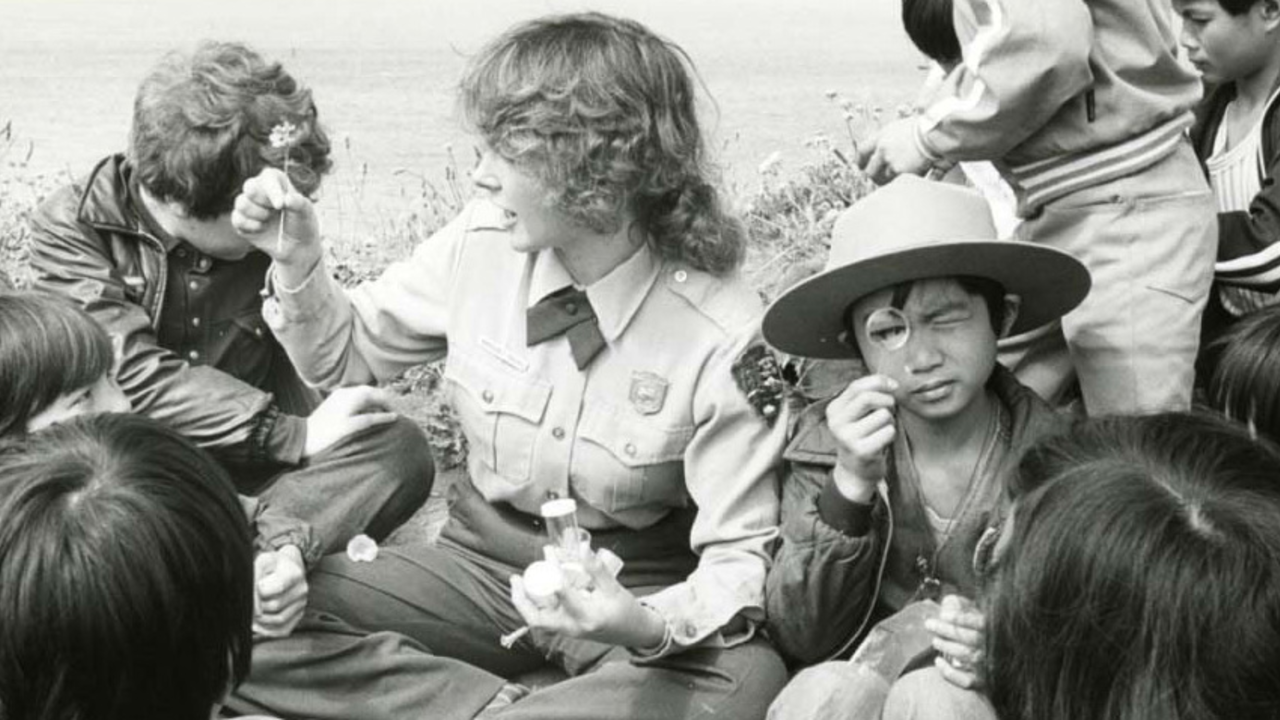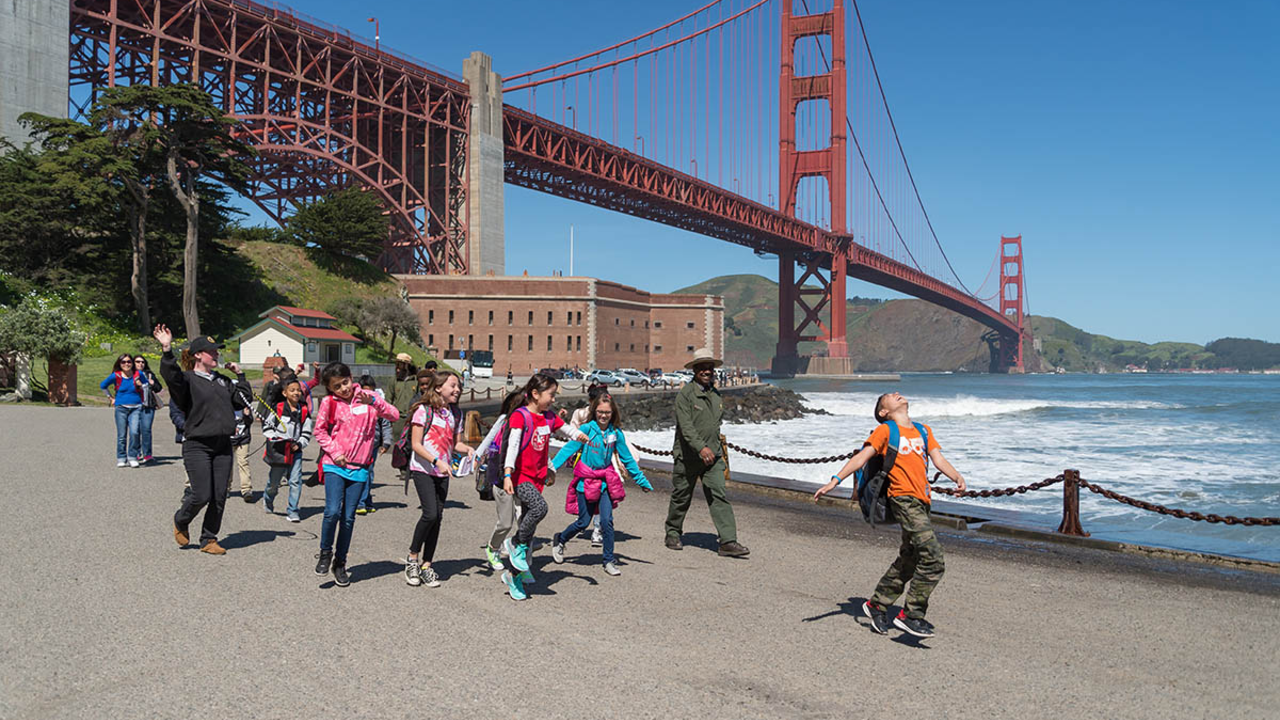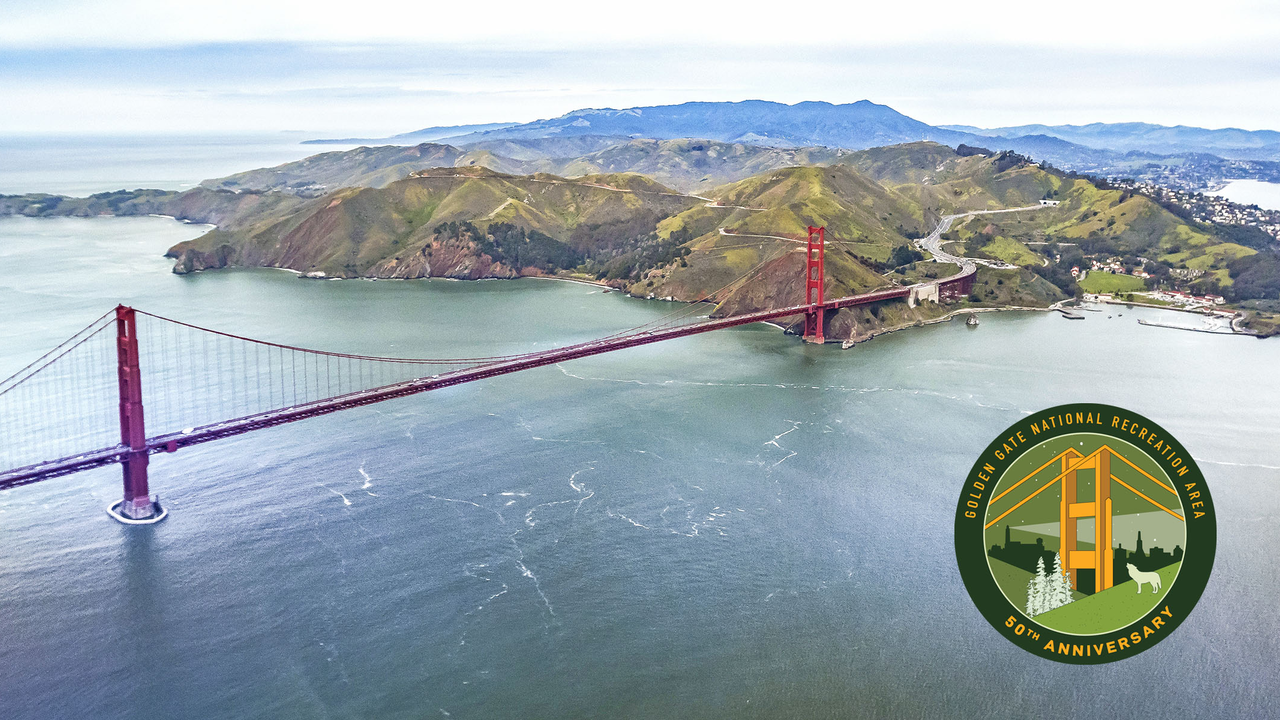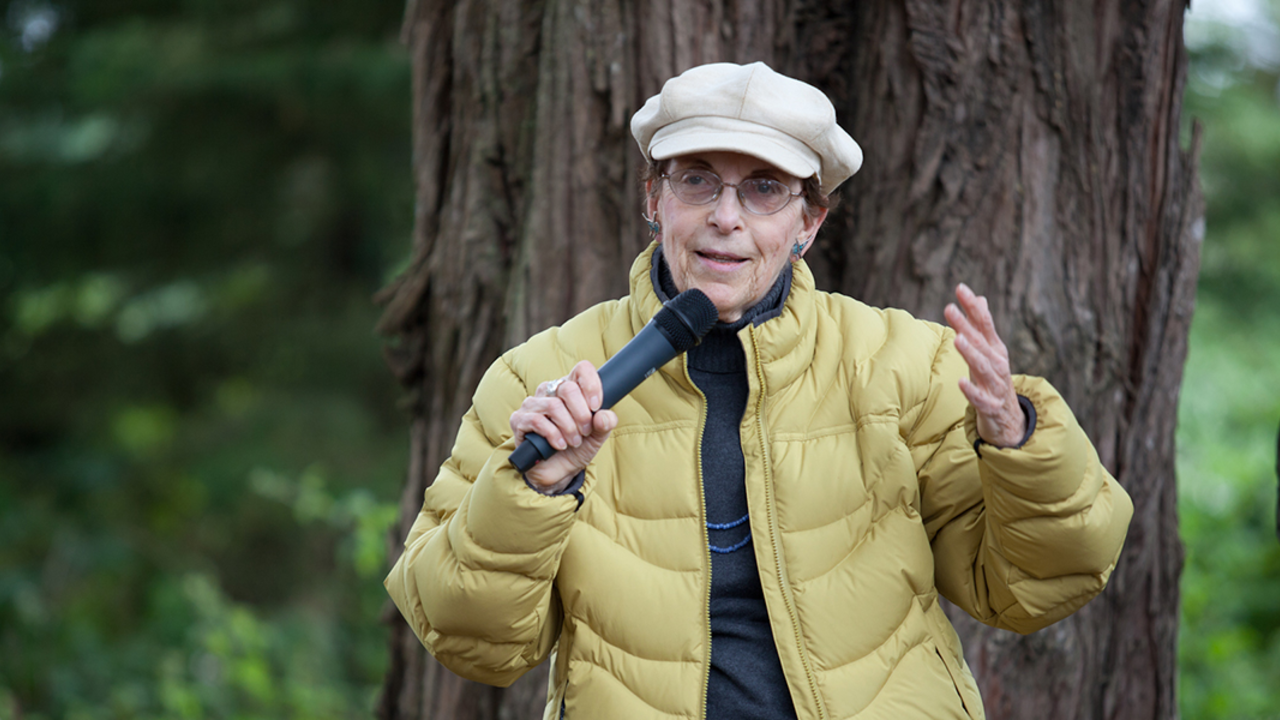50 years of the GGNRA: Timeline and key places to visit

Golden Gate NRA, Park Archives, Frear Collection
The Golden Gate National Recreation Area (GGNRA) broke new ground when it was formed on Oct. 27, 1972. No other NPS units had ever been established so close to such a densely populated urban area. This proximity opened doors for people-to-park connections in the Bay Area. The Parks Conservancy is proud to help our partners at NPS build on this legacy by making parks more welcoming and inclusive to all, for generations to come.
Here's where you can get started to learn more about the history of the GGNRA: The spots that were critical to the formation of the parks and a timeline of how we got here. Dive into more history on our GGNRA page or the NPS' Golden Gate 50 page.
KEY PLACES
TENNESSEE VALLEY: The area we now know as Tennessee Valley was slated to become an expensive development called Marincello. Activists fought to protect this land and made sure that it was included in the formation of the GGNRA. Visitors can now wander through the valley from a newly improved trailhead and parking lot, marveling at all that was saved.
EAST FORT MILEY: In 1970 Amy Meyer learned the federal government was debating between building a branch of the National Archives at Fort Miley or turning it into an 8,000-acre national park unit at the Golden Gate. This possibility of a national park space in the middle of San Francisco led Amy to form People for a Golden Gate National Recreation Area, with an even larger vision of what the park could be.
CRISSY FIELD MARSH: On May 6, 2001, the NPS and Parks Conservancy unveiled the revitalized Crissy Field, reshaping San Francisco’s northern waterfront. A former concrete US Army airfield and parking lot, Crissy Field now serves as a treasured national park site and a prime example, along with the nearby Presidio Tunnel Tops, of what can be accomplished when the community, supporters, and public agencies work together.

TIMELINE (KEY DATES)
1969
Occupation of Alcatraz by Indians of all Tribes
1971
Amy Meyer forms People for a Golden Gate National Recreation Area
1972
GGNRA established, including 34,000 acres
1980
GGNRA expands into San Mateo County, including Sweeney Ridge
1981
Parks Conservancy is established, joining NPS in stewarding GGNRA
1982
U.S. Air Force transfers 105 acres atop Mt. Tamalpais to NPS
1985
Golden Gate Raptor Observatory forms
1990
Muir Woods Visitor Center constructed
1992
Phleger Estate in San Mateo County added to GGNRA
1994
U.S. Army transfers all remaining parts of the Presidio to NPS
2001
Parks Conservancy and NPS unveil revitalized Crissy Field
2001
Crissy Field Center opens and begins youth programs
2014
Conservancy and NPS restore 46 acres of Redwood Creek habitat
2021
Revitalized Black Point Gardens opens to public
2022
Presidio Tunnel Tops opens to public
SCAVENGER HUNT: Think you know these parks? Check out the NPS 50th anniversary scavenger hunt to test your knowledge!


